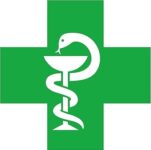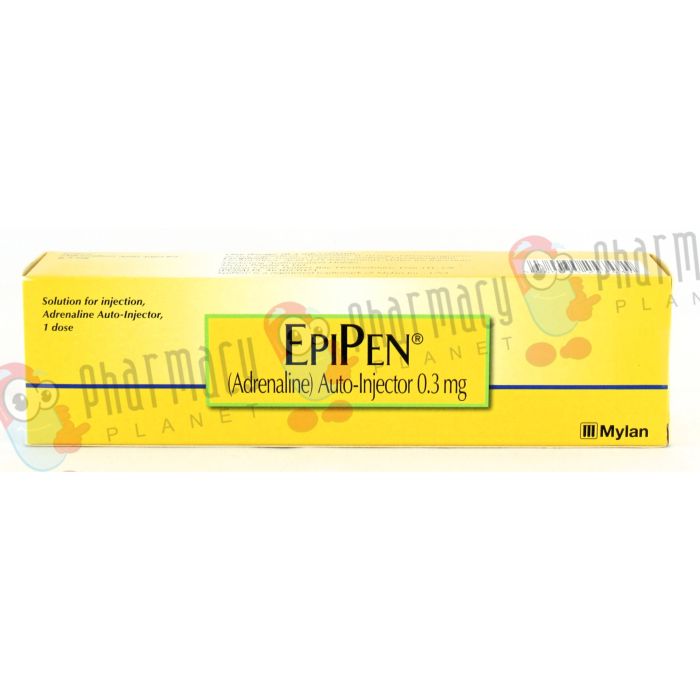What is Epipen?
epipen auto-injector comes in the form of a pre-filled epinephrine syringe in an automatic injection system (Autoinjector). This system injects a single dose of adrenaline into the muscle.
This medicine is for emergency situations only and you should see your doctor immediately after using your Autoinjector. Adrenaline is a hormone naturally secreted in response to stress. In acute allergic reactions, it works by improving blood pressure, heart, and respiratory function, and reduces swelling. Adrenaline is also known as epinephrine. EpiPen is used in the emergency treatment of severe allergic reactions or (anaphylaxis) caused by peanuts or other foods, medications, insect bites or stings, and other allergens, as well as exercise or an unknown cause.
How does it work?
What are the benefits of taking it?
How do I use it and its dosage?
Always carry two auto-injectors with you in case the first administration fails or one dose is insufficient. Always use this medicine exactly as your doctor has told you.
If in doubt, consult your doctor or pharmacist again.
It is injected only in the thigh. For single use only, please make sure you dispose of it safely immediately after use. Epipen releases a single 0.3 ml dose of fluid that is equivalent to 0.3 mg (300 micrograms) of adrenaline. After use, a volume of 0.75 ml remains in the autoinjector and must not be reused.
The reaction normally begins minutes after exposure to the allergen, and the person may experience:
Itchy skin, hives, redness, and swelling of the eyes, lips, or tongue. Breathing difficulty due to swelling of the throat. Wheezing, shortness of breath, and cough from hardening of the muscles of the lungs. Other symptoms of anaphylaxis such as headaches, vomiting, and diarrhea. Collapse and loss of consciousness due to a sharp drop in blood pressure.
If you experience these signs and symptoms, use the Epipen Autoinjector immediately. You should only inject this medication on the outer thigh, never on the buttock.
Sometimes a single dose of epinephrine may not be enough to completely reverse the effects of a severe allergic reaction. For this reason, your doctor may prescribe more than one unit of Epipen. If your symptoms have not improved or have worsened within 5 – 15 minutes after the first injection, either you or the person you are with should give a second injection. For this reason, you should always carry more than one Epipen unit with you.
Use in adults
The normal dose is 0.30 mg.
Overweight people may need more than one injection to reverse the effect of an allergic reaction.
Use in children and adolescents
The appropriate dose is 0.15 mg or 0.30 mg.
This depends on the child’s body weight and the doctor’s judgment.
Children and adolescents over 30 kg should use Epipen 0.30 mg.
Autoinjectors that release 0.15 mg of adrenaline are also available.
A dose below 0.15 mg cannot be administered with sufficient accuracy in children weighing less than 15 kg, so its use is not recommended unless the situation poses a risk to their health and under medical judgment.
Instructions for use
It is recommended that your family members, caregivers, or teachers are also trained in the correct use of the EpiPen allergy treatment autoinjector.
Revolving Solution Window Sleeve: Rotate the cover over the Solution Window to align the lens with the Autoinjector Solution Window.
Solution window: Look through the lens of this window before injection to verify that the solution is clear and ready for use.
Injection indicator: Before injection, you can see a white plastic plunger through the window. This indicates that the Epipen Autoinjector has not been mistakenly activated or tampered with. After injection, the injection indicator turns red, indicating that the Auto-Injector has been successfully activated.
Black Needle Guard (Reversible): Protects the needle when you are not using the Epipen Autoinjector. Pull off the needle guard before injection. After injection, the patient should rotate the black needle guard and put it back on the same end of the Epipen Autoinjector to cover the needle.
Gray safety cap: This covers the red injector button. Prevents the button from being pressed by mistake.
Checking the Epipen Autoinjector
- Rotate the cover protecting the solution window fully in the direction shown by the arrows to align the lens with the solution window on the Autoinjector.
- Look through the lens in the solution window and check that the solution is clear and colorless. Discard the Epipen Autoinjector if the solution is cloudy, colored, or contains particles.
- Make sure the injection indicator is not red. If it is red, it means that the Epipen Autoinjector has already been activated and must be discarded.
- Rotate the sleeve over the solution window fully as indicated by the arrows, to ensure that the solution window is covered. Put the Epipen Autoinjector back into the container until you need to use it.
Using the Epipen Autoinjector
If the black needle guard has been removed, do not put your thumb, fingers, or hand over the open end (needle end) of the Epipen Autoinjector.
You must follow the following steps to use the Epipen Autoinjector:
- Remove the black needle guard by pulling hard in the direction of the arrow. This also removes a gray needle safety cover.
- Remove the gray safety cap from the red injector button, pulling as indicated by the arrow
- Support the open end (needle end) of Epipen against the outer thigh. If necessary, Epipen can be used through light clothing, such as jeans, cotton, or polyester.
- Press the red injector button until a click is heard. Hold the Epipen Autoinjector against the thigh for 10 seconds. Slowly remove Epipen from the thigh. Lightly massage the injection site.
- The injection indicator will have turned red. This shows that the injection has been completed. If it is not red, you must repeat the injection with a new Epipen,
- After injection, the needle is exposed. To cover it, turn the black needle guard over and with the wide end press the needle into the open end (needle end) of the Epipen Autoinjector (as indicated by the arrow).
EpiPen is designed as an emergency treatment. You should always seek medical help immediately after the use of Epipen.
Side effects & precautions
Like all medicines, the Epipen Allergy injector can cause side effects, although not everybody gets them.
EpiPen contains sodium metabisulfite (E223), which can cause allergic reactions and difficulty breathing, especially in cases where there is a history of asthma. You should seek medical help immediately if you experience these side effects.
Frequent adverse effects of adrenaline include a feeling of pounding heartbeats (palpitations), fast or irregular heartbeat, sweating, nausea, vomiting, shortness of breath, dizziness, weakness, paleness, tremors, headaches, apprehension, nervousness, anxiety and coldness in extremities.
Other less common side effects include hallucinations, fainting, dilated pupils, difficulty urinating, muscle tremors, increased blood pressure, and blood changes such as high sugar levels, low potassium levels, and high acid content.
Occasionally, at high doses, or in susceptible patients, a sharp increase in blood pressure can be observed, which can cause bleeding in the brain, irregular heartbeat or heart attack, and decreased blood flow in the skin, mucosa, and kidneys.



Reviews
There are no reviews yet.